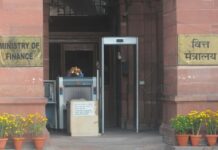By Arul Louis
UNITED NATIONS– India remains the global growth champion with its economy set to increase by 7.8 percent in the new year although a World Bank report released Thursday cut it from the 7.9 projected last June.
Overall the bank’s Global Economic Prospects Report painted a gloomy global outlook cutting the global growth by almost a half percent to 2.9 percent in 2016 from the 3.3 percent forecast last June.
In the growth race among the major economies, China remains the runner-up with its economy projected to grow by 6.7 percent this year and 6.5 percent next year. The growth projections for U.S. economy are 2.7 this year, 2.4 next year and 2.2 in 2018.
It kept India’s economic growth as measured by increase in gross domestic product at 7.9 percent for 2017, “although the pace of reforms has slowed somewhat.” For 2018, it cut the projection from 8 percent made last June to 7.9 percent.
The report recognised India’s resilience saying, “Compared to most other major developing countries, India is well positioned to withstand near-term headwinds and volatility in global financial markets due to reduced external vulnerabilities, a strengthening domestic business cycle, and a supportive policy environment.”
However, it also drew attention to the dark clouds overhanging the reform process. “In India, progress in reforms is not assured as the upper house of parliament, which the ruling party does not control, has the power to block the government’s legislative agenda,” the report said. “A failure to pass the goods and services tax (GST) could hamper the government’s ability to ramp up spending on infrastructure needs and preserve the status quo of fragmented domestic markets.”
“Slow progress on land reforms could add to investment delays,” it added. “And private investment growth may be unable to build further momentum. The financing of public-private partnerships also remains a challenge.”
The report also referred to another area of concern, the slowdown in industrial production. Both the services and manufacturing Purchasing Managers’ Indices (PMIs) have softened, it said. The PMI fell from 54.5 for December 2014 to 49.15 last month.
On the bright side, the report said, “The investment cycle is gradually picking up, led by a government efforts to boost investment in infrastructure, particularly roads, railways and urban infrastructure.” It added that India’s currency and stock markets weathered the volatility in the global financial markets last year. Sensex, a key Indian stock market index ended 2015 up 1.08 percent.
“Progress on infrastructure improvements and government efforts to boost investment are expected to offset the impact of any tightening of borrowing conditions resulting from tighter U.S. monetary policy,” the report said. “Such investment will also lift potential growth over the medium term. Low international energy prices and domestic energy reforms will ease energy costs for Indian firms that tend to be energy intensive.”
Other positives on India’s report card that the World Bank noted were:
* Sharp reduction in current account deficit, to about 1 percent of GDP in the second quarter of 2015 from about 5 percent in mid-2013 during the turmoil in the financial markets over U.S. Federal Reserve policy.
* The central bank rebuilding reserves while net foreign direct investment (FDI) inflows have stayed positive.
* Reduction in the central government’s fiscal deficit close to 4 percent of the GDP, down from a peak of 7.6 percent in 2009 through fiscal consolidation.
* The recently announced salary increases for public sector employees and support for urban spending from lower inflation offsetting fall in rural incomes because of two successively weak monsoons.






